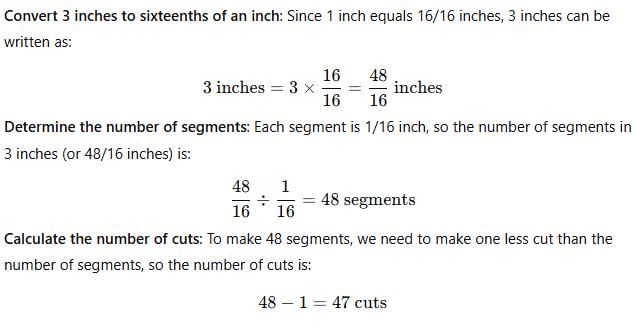Test: Arithmetic - GMAT MCQ
10 Questions MCQ Test - Test: Arithmetic
The decorating committee for a dance plans to fringe the 3-inch-wide end of a streamer by making small cuts every 1/16 inch.How many cuts must be made to fringe the end?
A survey asked 1,150 people to choose their favorite laundry detergent from brands A, B, and C. Of the people surveyed, x percent chose A as their favorite brand. If x is rounded to the nearest integer, the result is 3. Which of the following could be the number of people who chose A as their favorite brand?
I. 30
II. 35
III. 45
II. 35
III. 45
| 1 Crore+ students have signed up on EduRev. Have you? Download the App |
The average age of three friends A, B and C is 7 years. Five years later, the average age of A and C will be 1½ years more than B’s age then. How old will B be 10 years hence (in years)
A circular microchip with a radius of 2 centimeters is manufactured following a blueprint scaled such that a measurement of 1 centimeter on the blueprint corresponds to a measurement of 0.8 millimeters on the microchip. What is the diameter of the blueprint representation of the microchip, in centimeters? (1 centimeter = 10 millimeters)
The grass in a field grows in a constant rate. If 240 sheep were to graze on it, it will become bare in 5 weeks. If 200 sheep were to graze on it, it will become bare in 7 weeks. How many weeks would it take 170 sheep to graze, before the field becomes bare?
What is the 18th digit to the right of the decimal point in the decimal expansion of 1/37?
At the average download speed of 12,000,000 bits per second, 75,000,000 bytes of data can be downloaded in 50 seconds. With a certain dial-up connection, the same task would take 3 hours. Which of the following is closest to the average download speed, in bits per second, of this dial-up connection?
If an object travels 100 feet in 2 seconds, what is the object’s approximate speed in miles per hour? (Note: 1 mile = 5280 feet)
In a certain population of microbes in a petri dish, the rate of increase in the population is 9 percent per hour. The time it takes for a given population to double can be estimated using the formula 70/t hours, where t is the rate of increase per hour expressed as a percent. If the number of microbes in the dish is 60,000 at the start of the first hour, what will be the approximate number of microbes after 48 hours?
Working at their individual same constant rate, 24 machines can complete a certain production job in 10 hours when they all work together. On a certain day, due to a minor malfunction, 8 of those machines were not operating for the first 2 hours. Compared to normal days, what is the extra time taken to complete the production job on that day?


















